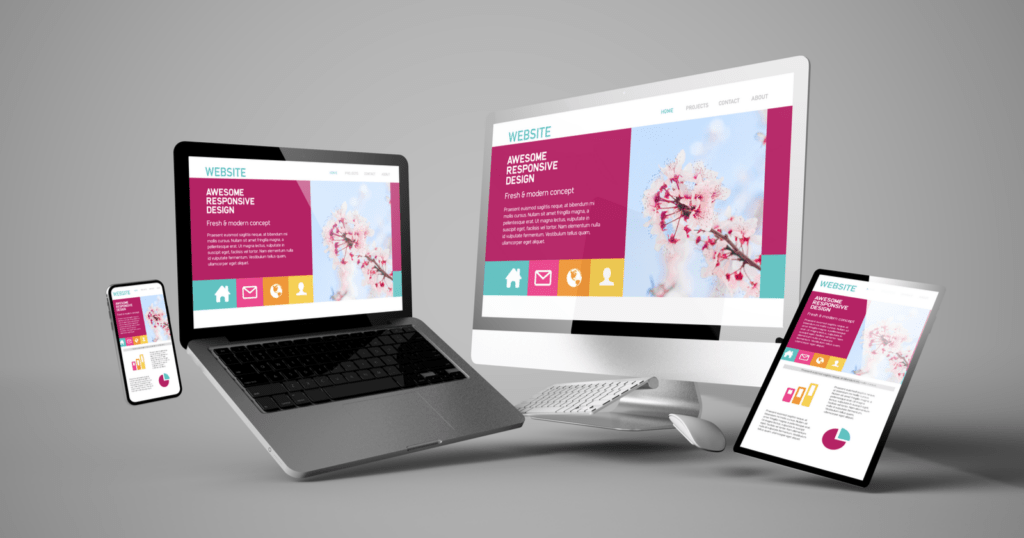Low-Cost and Top-Tier Website Design for Small Business Owners
Low-Cost and Top-Tier Website Design for Small Business Owners
Blog Article
Leading Tips for Developing an Impactful Website Style That Transforms
To achieve this, one need to think about a selection of elements, consisting of understanding the target audience, focusing on customer experience, and optimizing for mobile platforms. The strategic use of compelling call-to-actions and a well-defined aesthetic pecking order plays an important function in directing users through their journey.

Understand Your Target Audience
Recognizing your target market is basic to reliable site design, as it lays the foundation for developing an appealing individual experience. Identifying that your individuals are, including their demographics, preferences, and actions, makes it possible for designers to customize the internet site's material, layout, and functionality to satisfy particular needs.
Conducting thorough market research is crucial in this procedure. Studies, interviews, and analytics can give useful understandings right into individual expectations and pain points. By compiling this data, designers can create customer identities that represent different sectors of the audience, making certain that design decisions are educated and relevant.
Moreover, recognizing the target audience assists in picking suitable style components such as color plans, typography, and images that resonate with users. A web site that talks directly to its audience promotes a feeling of link and trust, encouraging longer brows through and greater conversion rates.
Eventually, a user-centered strategy to website design not only improves individual satisfaction however likewise sustains organization purposes by driving engagement and commitment. By focusing on the needs and preferences of the target audience, a site can successfully offer its function and attain wanted end results.
Prioritize Customer Experience
To boost the overall effectiveness of a site, prioritizing individual experience (UX) is necessary (Website Design). A properly designed UX ensures that visitors can navigate the website effortlessly, find information quickly, and engage with content meaningfully. This causes raised customer satisfaction and higher conversion rates
Begin by implementing intuitive navigation. Menus ought to be practically structured, permitting customers to situate vital locations of the website with marginal initiative. Uniformity in layout elements, such as color design and fonts, promotes experience, which is crucial for preserving individual interaction.
In addition, consider the loading rate of your internet site. A delay of just a few seconds can bring about considerable drop-offs, as individuals are much less likely to wait for a slow-loading page. Improving pictures and optimizing code can enhance performance and preserve site visitors.
By focusing on user experience, you not just create a more delightful setting for visitors however additionally reinforce your brand name's integrity. Inevitably, an emphasis on UX is an investment in the long-term success of your site.
Enhance for Mobile Tools
Maximizing for smart phones is essential in today's digital landscape, where a boosting variety of customers accessibility sites with smart devices and tablet computers. A mobile-friendly layout not just boosts customer experience yet also plays a significant role in improving online search engine rankings. To accomplish this, it is important to take on a receptive layout that instantly adapts to numerous display dimensions and alignments.

Packing browse around this site speed is another crucial element; mobile users are typically less patient and anticipate fast accessibility to details. Maximize pictures and take advantage of web browser caching to improve efficiency. Ultimately, test your internet site on numerous gadgets and screen resolutions to determine and correct any prospective usability concerns. By prioritizing mobile optimization, you make certain that your website continues to be competitive and effectively involves a more comprehensive audience.
Use Compelling Call-to-Actions
A site's effectiveness commonly pivots on its capacity to direct visitors towards preferred actions, making engaging call-to-actions (CTAs) necessary elements of style. CTAs act as the essential points that guide individuals to engage with the site, whether that means purchasing, authorizing up for an e-newsletter, or downloading and install a resource.
To develop reliable CTAs, quality is extremely important. Usage succinct language that clearly interacts the action you want the user to take.
In addition, think about using directional signs, such as arrowheads or images, to lead customers toward these switches. By focusing on these elements, organizations can dramatically improve individual engagement, driving conversions and ultimately achieving their internet site's objectives.
Concentrate On Visual Power Structure
Reliable web site layout counts greatly on a well-structured visual hierarchy that guides individuals with web content seamlessly. By organizing aspects in a fashion that focuses on details, designers can enhance user experience and assist in decision-making. This involves making use of dimension, color, contrast, and spacing purposefully to attract focus to one of the most important elements of a read web page.
Making use of bigger typefaces for headings and subheadings establishes a clear difference in between various areas, enabling users to check material effortlessly. In addition, utilizing different colors for buttons and calls-to-action can capture customer focus and urge interaction. Whitespace is another essential part; it protects against mess and makes it possible for individuals to focus on key messages without distractions.
Pictures and graphics need to enhance the message while additionally sticking to the established hierarchy, reinforcing the total message (Website Design). Consistency in style components, such as shade systems and typography, more strengthens the visual hierarchy, making my response navigation intuitive

Final Thought
Finally, effective site style necessitates a detailed understanding of the target audience, prioritization of user experience, and mobile optimization. The calculated usage of compelling call-to-actions and a well-defined visual pecking order better enhances user interaction. By implementing these principles, sites can accomplish greater conversion prices, guaranteeing that style aspects not just attract visitors yet likewise assist in seamless navigation and communication. Inevitably, a well-executed web site style works as a crucial component in driving customer activities and accomplishing company objectives.
Report this page